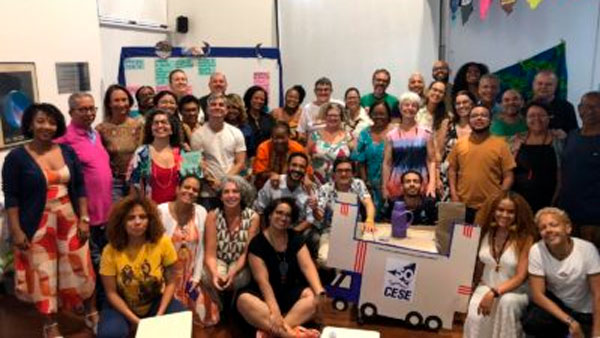THE DEATH OF THE WATERS OF WESTERN BAHIA
19 de February de 2025

“You can walk along the beds of rivers that have died; they remain dry all year round. You only see water in them on rainy days. After the rains, they dry up again”
Communication from the Pastoral Land Commission (Comissão Pastoral da Terra: CPT) in Bahia
Mapping work in the sub-basins of the Corrente and Carinhanha rivers, carried out by many people over the course of 2023 and 2024, has identified 3,050 stretches of water that have dried up, including streams, creeks, springs and headwaters, totaling 7,120 km of dead water. Stretches of the upper and middle Corrente river were mapped, including the Guará, do Meio, Santo Antônio, Correntina, Arrojado and Formoso rivers; and the sub-basins on the left bank of the Carinhanha river in Bahia, including the Riacho do Meio and Itaguari rivers.
In addition to this dead water, the map shows a further 580 stretches of water classified as in critical condition, corresponding to 3,837 km, with an emphasis on the major river channels in the basins on the map. There are also labels identifying stretches of deforested areas, center pivot irrigation systems, water storage pools and other complementary information. The communities note that all the waters identified began drying up in the 1980s, around 15 years after the first “development” projects in the region were established, when large areas were cleared for pine and eucalyptus plantations in the Western Cerrado.
SEE WHAT THEY SAY ABOUT US
CESE was set up during the most violent year of the Military Dictatorship, when torture had been institutionalized, when arbitrary imprisonment, killings and the disappearance of political prisoners had intensified. The churches had the courage to come together and create an institution that could be a living witness of the Christian faith in the service of the Brazilian people. I’m so happy that CESE has reached its 50th anniversary, improving as it matures.
I am a macumba devotee, but I love being with partners whose thinking is different from ours and who respect our form of organization. CESE is one such partner: it helps to build bridges, which are so necessary to ensure that freedom, diversity, respect and solidarity can flow. These 50 years have involved a lot of struggles and the construction of a new world.
Over these 50 years, we have received the gift of CESE’s presence in our communities. We are witness to how much companionship and solidarity it has invested in our territories. And this has been essential for us to carry on the struggle and defence of our people.
When we hear talk of the struggles of the peoples of the waters, of the forests, of the semi-arid region, of the city peripheries and of the most varied organizations, we see and hear that CESE is there, at their side, without replacing the subjects of the struggle. Supporting, creating the conditions so that they can follow their own path. It is this spirit that we, at ASA, want you to maintain. We wish you long life in this work to support transformation.
In the name of historical and structural racism, many people look at us, black women, and think that we aren’t competent, intelligent, committed or have no identity. Our experience with CESE is different. We are a diverse group of black women. We are in varied places and have varied stories! It’s important to know this and to believe in us. Thank you CESE, for believing in us. For seeing our plurality and investing in us.
You have to praise CESE’s capacity to find answers so as to extend support to projects from traditional peoples and communities, from family farming, from women; its recognition of the multiple meanings of the right to land, to water and to territory; the importance of citizenship and democracy, including environmental racism and the right to identity in diversity in its discussion agenda, and its support for the struggles and assertion of the values of solidarity and difference.




















